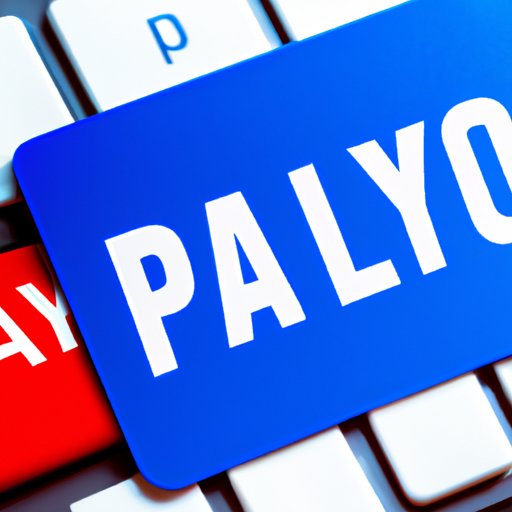
Introduction
Are you tired of carrying around cash or struggling to figure out which payment app to use for online purchases? Look no further than PayPal. This user-friendly platform allows you to quickly and securely make payments, both online and in-person. In this article, we’ll guide you through the steps of setting up a PayPal account, explain its benefits, compare it to other payment methods, answer frequently asked questions, and provide tips for using it in a business setting.
A Step-by-Step Guide to Setting up a PayPal Account
Creating a PayPal account is a straightforward process that will only take a few minutes. Start by visiting paypal.com and clicking the “Sign Up” button located in the upper right-hand corner. You’ll have the choice of creating either a personal or business account.
To create a personal account, you’ll need to provide some basic personal information, including your name, address, and phone number. PayPal will also prompt you to add a bank account or debit/credit card to use for payments. Once the account is set up, you’ll be able to link your PayPal account to various online platforms and begin making payments.
If you’re creating a business account, you’ll need to provide additional information, such as your business name, tax ID number, and business address. You’ll also have access to additional features, such as invoicing and a virtual terminal for in-person payments.
The Benefits of Using PayPal
There are many advantages to using PayPal as your go-to payment method. For one, it’s widely accepted by both online and brick-and-mortar retailers, providing a reliable and secure payment option. Additionally, you can link multiple bank accounts and/or credit cards to your PayPal account, making it easy to switch between payment methods. One of the biggest benefits of PayPal is its buyer protection program which helps protect buyers from fraud and unauthorized charges. With PayPal, you also don’t have to worry about exposing your sensitive financial information since the platform keeps that information secure.
For those who use PayPal frequently, the platform also offers rewards programs and special promotions. Through PayPal’s “PayPal Credit” option, you can also apply for a line of credit to use for payments. This method is particularly useful for larger purchases that you’ll need to pay off over time.
Comparing PayPal to Other Payment Methods
While there are many payment options available today, PayPal differentiates themselves in a few critical ways. For one, PayPal operates in many different countries and supports transactions in over 25 currencies. PayPal’s buyer protection program and encryption also make it a secure payment method for both buyers and sellers. And, because PayPal acts as a middle-man between your financial institution and merchant, it’s easier to track down unauthorized transactions.
Other payment methods like Apple Pay, Venmo, and Google Wallet all have their own unique features, but PayPal stands out as the most reliable option in terms of availability, use cases, and security features.
FAQs About Setting Up a PayPal Account
When setting up a PayPal account, you may have a few questions or concerns. Here are some of the most common FAQs about PayPal:
How much does PayPal cost to use? PayPal does not charge any fees to create an account or make online purchases. However, you may face fees when receiving money or withdrawing funds from your account. Be sure to review PayPal’s fee structure to understand any additional costs you may incur.
Is PayPal secure? PayPal is widely recognized as one of the most secure and reliable payment platforms available today. The platform uses encryption and strict security measures to protect your financial information and prevent fraud.
How do I verify my PayPal account? To verify your PayPal account, you’ll need to provide additional identification and confirm your bank account or debit/credit card. This process helps ensure that you’re the rightful owner of the account.
Can I use PayPal for international transactions? Absolutely! PayPal is a global platform that supports transactions in many different currencies and countries. Be sure to review PayPal’s exchange rate and fee policies for international transactions.
What are some alternative payment methods to PayPal? Some alternative payment methods to PayPal include Apple Pay, Google Wallet, Square Cash, and Venmo. Each platform has its own unique features and benefits, so be sure to review them all before deciding which suits your needs best.
Using PayPal for Business
Business owners can benefit from using PayPal as well, whether it’s for invoicing or accepting payments in-person. For freelancers or small businesses, PayPal’s invoicing feature allows for easy payment processing and customizable invoices with your branding. PayPal also has a Virtual Terminal feature that allows you to process in-person payments as well. Plus, PayPal can help streamline your financial processes with features like automatic transfers and detailed reporting.
Conclusion
PayPal is a popular and reliable payment method that both individuals and businesses can benefit from. By following this step-by-step guide to setting up a PayPal account, you’ll be able to start making secure payments in no time. Take advantage of PayPal’s buyer protection program, rewards programs, and features like invoicing and virtual terminals to maximize its benefits.





